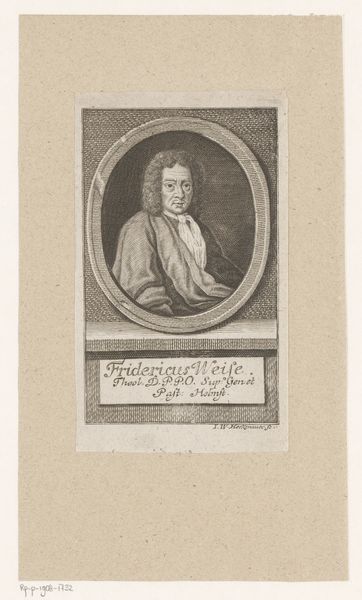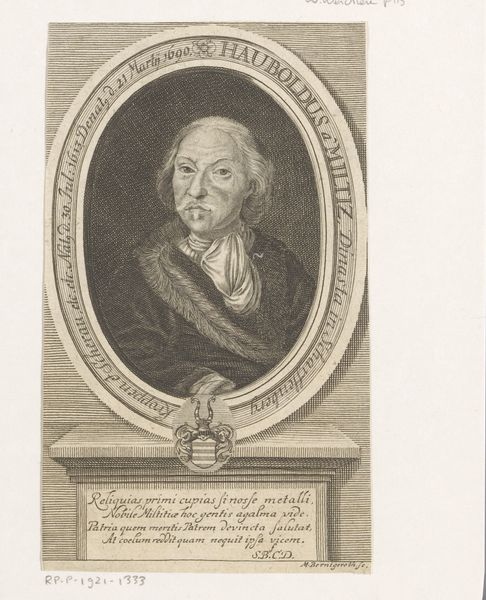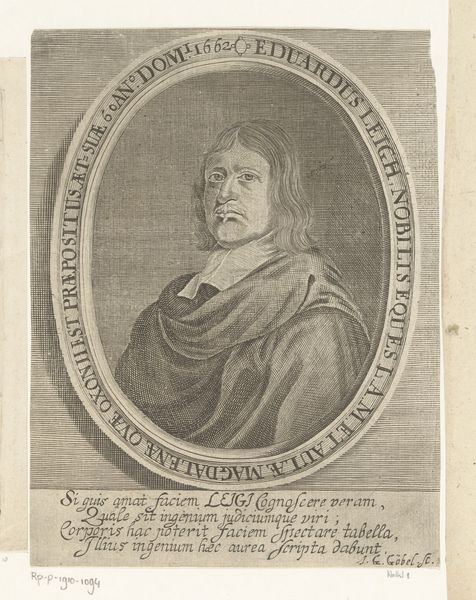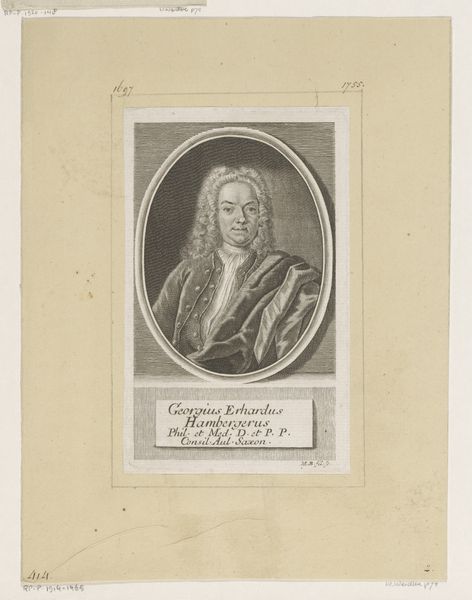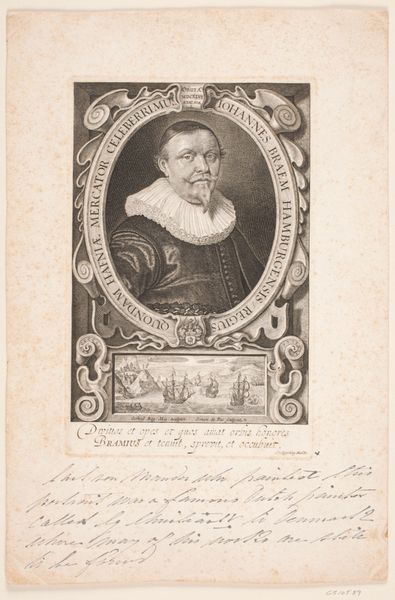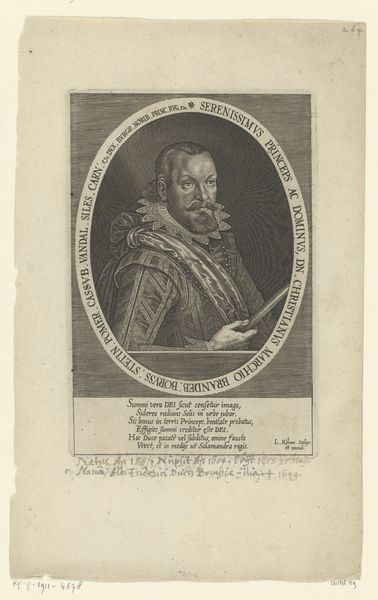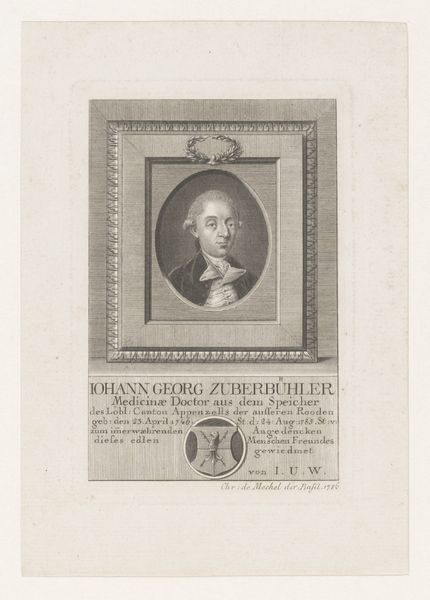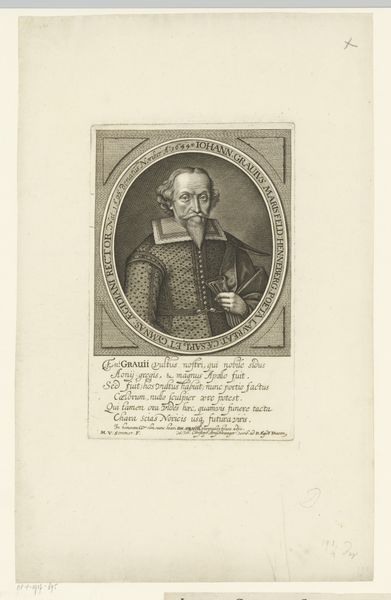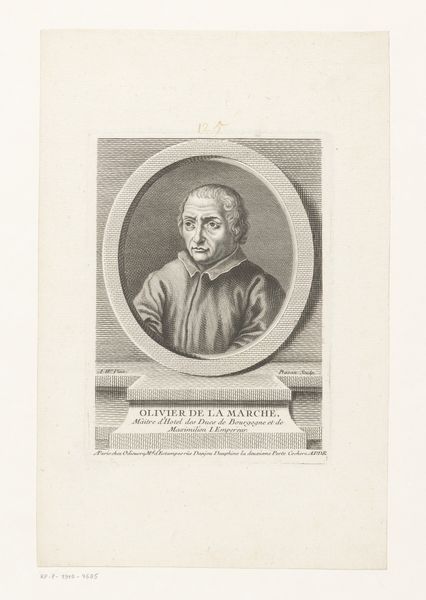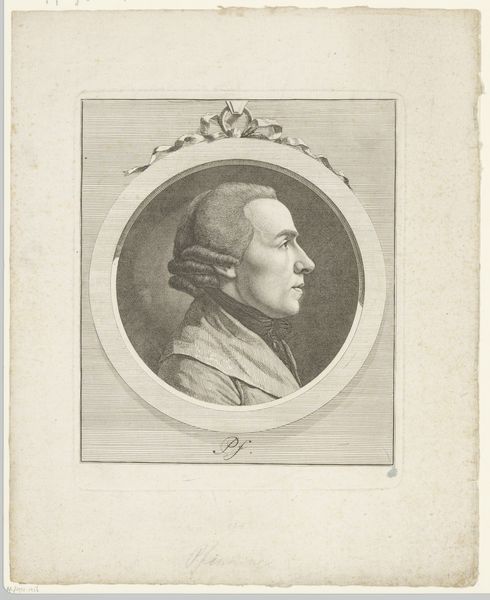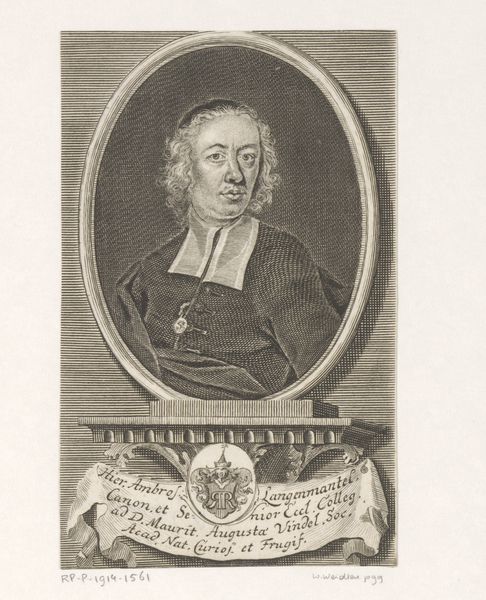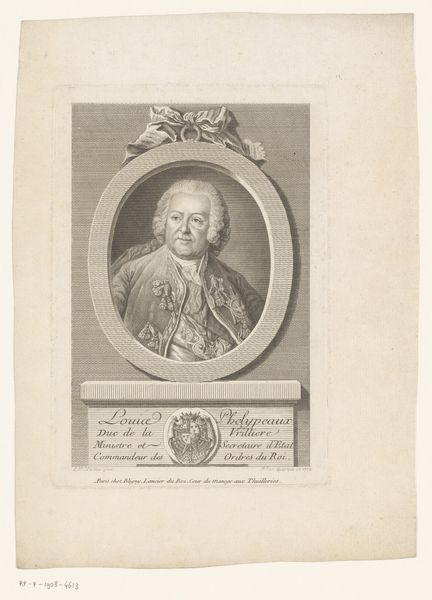
print, engraving
#
neoclacissism
# print
#
old engraving style
#
engraving
Dimensions: 134 mm (height) x 91 mm (width) (plademaal)
Curator: This engraving from 1798 by N. Nissen depicts Biskop P. O. Boisen, and it is currently held at the SMK, the Statens Museum for Kunst. Editor: My immediate impression is one of cool authority; it's interesting how the crisp lines and carefully hatched shading of the engraving process lend such a sense of decorum to the subject. Curator: It's a fine example of neoclassical printmaking. You see the clear lines, the emphasis on form and structure? These things were products of intense labor and the tools used. The metal plate, the acid bath… this was painstaking, artisanal work, not just a spontaneous expression. Editor: Absolutely. And that precision reinforces the status of Boisen, not only as an individual but as representative of the Church's authority. The inscription at the bottom locates him geographically and professionally. Think of the role portraits like these played, circulating ideas and solidifying social hierarchies. The Bishop's gaze directs us as he is a powerful man that demands attention. Curator: Right, the means of distribution is also crucial. Prints were more accessible than painted portraits, a form of accessible portraiture made reproducible. So this image could reach a wider audience, spreading not just the Bishop's image, but also certain ideas about status and piety. What the artist and printer do to spread his word also shows the Church power. Editor: Indeed. It also demonstrates a calculated balance between piety and power. The composition, framed within that oval, emphasizes his face and knowing expression, drawing a relationship with the long history of portraying people of power. How does the image work ideologically? That question to me seems more important. Curator: But without understanding the process and how these prints were produced, how they circulated, we miss so much. It’s about shifting the focus from the romantic idea of the artist to the real material conditions. The very substance that created this print becomes an inherent element of it. Editor: It all is quite interesting to view, a clear snapshot of the visual culture and socio-political landscape of the time. It shows what messages the higher ups in that community wanted to communicate and how. Curator: Exactly. For me it illuminates a nexus between art, labor, and belief, etched onto the copper plate. Editor: For me, an artifact illustrating how power presents itself through the manipulation of visual messaging, as we should always analyze throughout history.
Comments
No comments
Be the first to comment and join the conversation on the ultimate creative platform.
